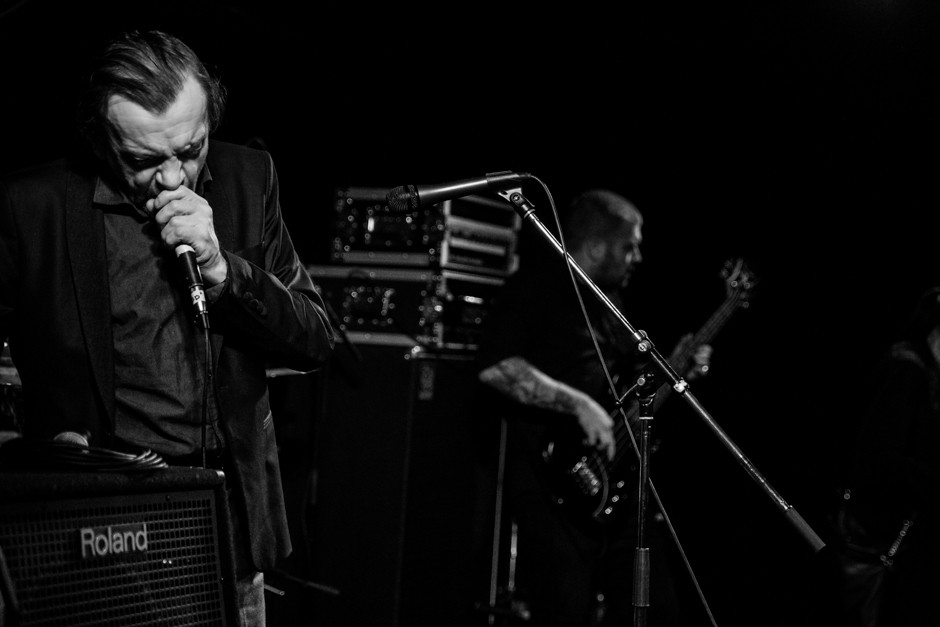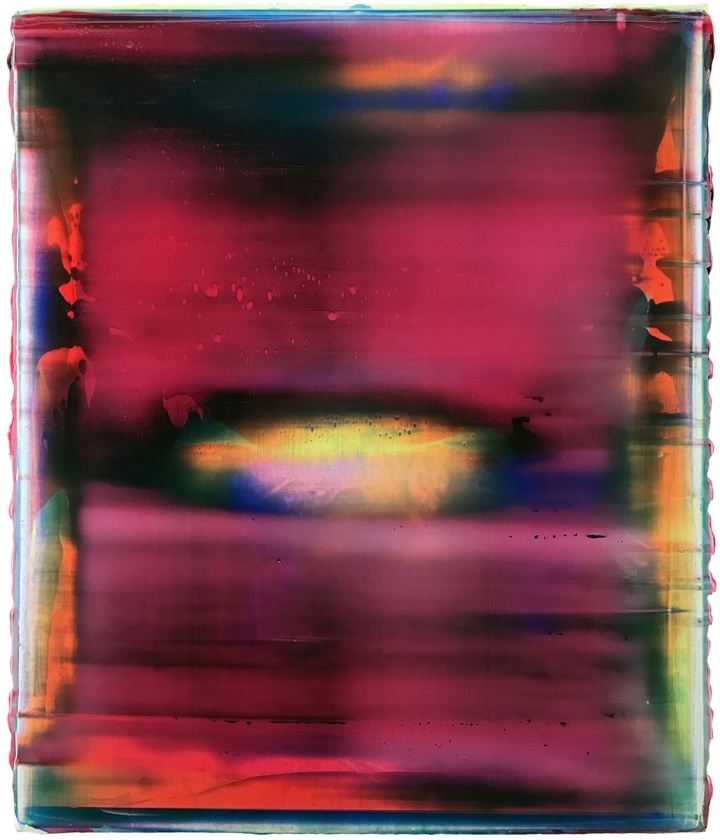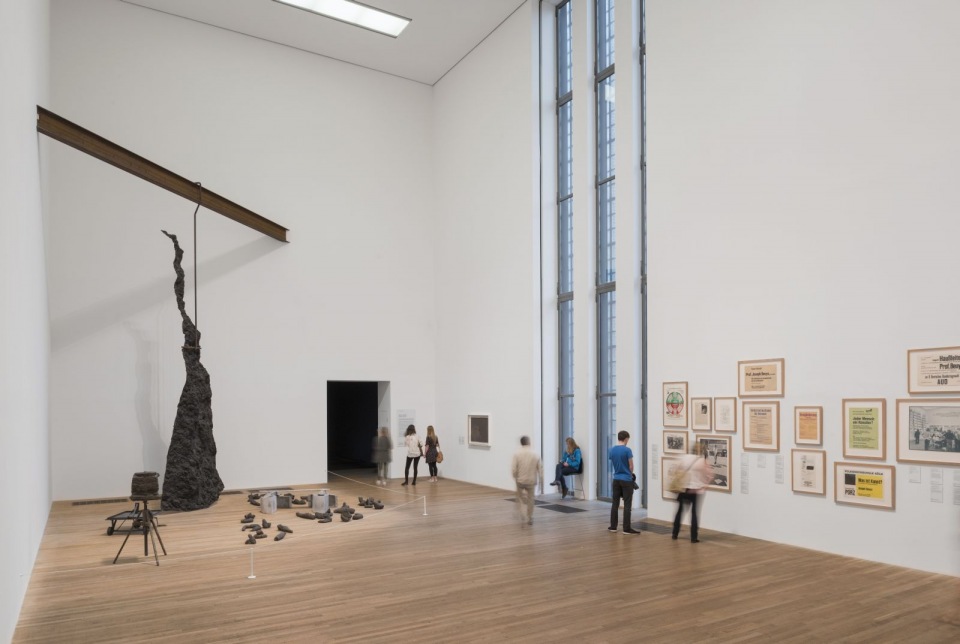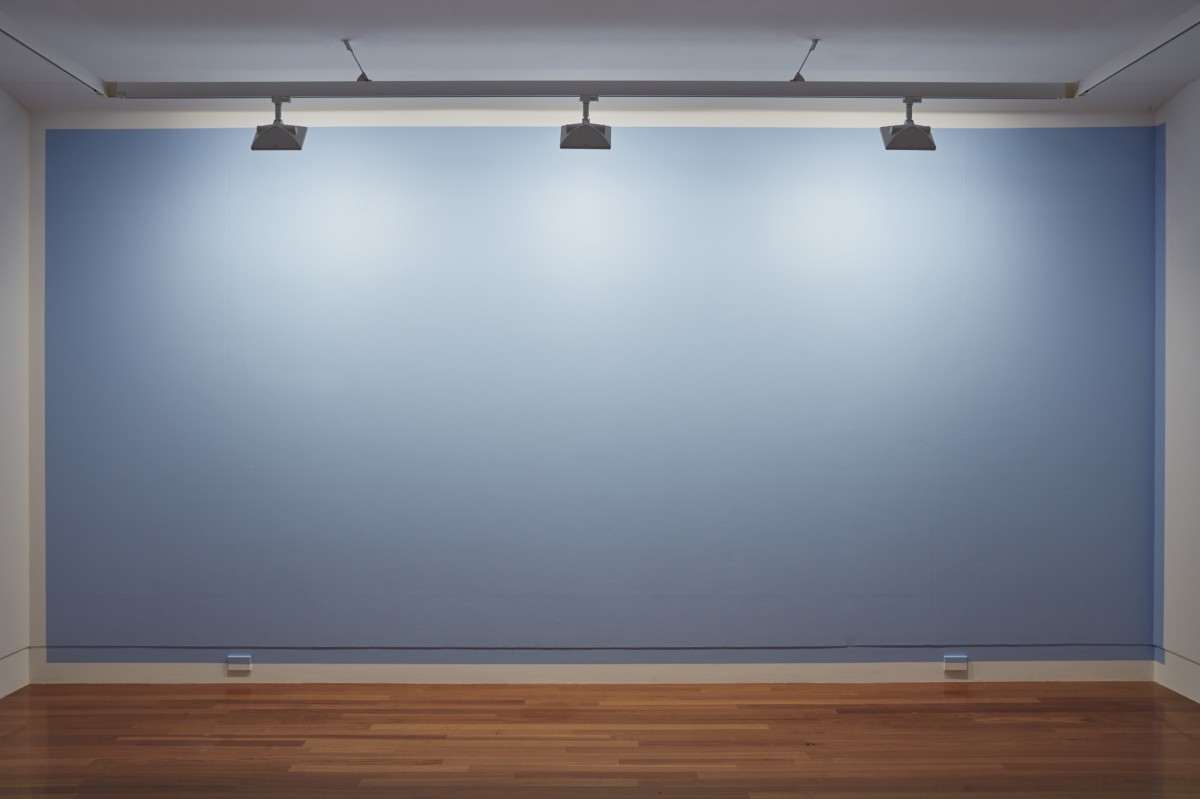by Nikolas T. Brocklehurst
Prologue
To begin is to establish an edge, a boundary, a periphery from which its other shall be measured.
Act 1
Surface tension: The tale of Surface and Void
Act 1, scene I
Patrons enter gallery
“What do you see?”
“I see depth, I see an endless blue void, it’s kinda peaceful”, “what do you see?”
“Hmmm, hm I can only see surface, solid, stable. oh no wait, I can see the other too.”
“Oh yeah I see that too, hmm”
“Hmm”
“Yeah hmm”
Act 1, scene II
Staring upon Slipped Monochrome #2, our vision quickly adjusts and readjusts only to adjust again. It is searching for something, anything to grasp onto before it falls flat upon the surface or falls forever into the void. No sooner has the surface been discovered than it dissolves and we slip below it. As the descent begins we are brought back to the surface, gasping for that most ethereal substance before we sink once more.
To evoke void is to suggest an engulfing emptiness, to consider surface is to acknowledge an impenetrable fullness. The irony of course is that they are both visibly invisible. Without referent to firmly grasp we are visually trapped in the absurdity of a Zenoian Paradox.
This flickering between the infinite and the finite, definite and indefinite, this multistable perception of cosmogony as void and self-evidence as surface allude to the actual object searched for. A moment that can only be observed after its instantiation in the acknowledgment a pre and post object, that is the unknowable ontological moment
Act 2
Masquerade: Place, space and form
Act 2, scene I
“Hey, look at that!”
“At what”
“That”
Our patrons take step back
“And there”
“hmm”
“Hmm”
Act 2, scene II
Embracing architecture as anti-stretcher, Slipped Monochrome #2 descends onto the floor and out of the gallery. Exposing the referential wall, it traces place to make form manifest. Forced to acknowledge its own dimensionality, its micron thin physicality it gaines a sculptural weight. Yet the work’s actual intrusion within the space of place, reveals an installational spatiality where we are invited into the work as the gallery is subsumed into the experience.
To see Slipped Monochrome #2s shedding of its painterly functionality as a critique of the modernism’s aspirations of transcendence and its place of worship, legitimises their intent. Instead it is precisely the gallery’s inability to hold SM2 within the confines of form and place that translates critique to expansion.
Brought to the for is not the play of the signified but their substitution, suddenly the wall exposed comes to stand for each and every wall, the white walls of the gallery, the timber walls of a house, the brick walls of garden, the tile floor of the gallery becomes every floor, the street, the earth. Thus Slipped Monochrome #2 does not universalise the subject but subjectises the universal and ubiquitous. Despite a guise of modernism, it negates the singularity of the enterprise and undertakes the postmodern turn.
Act 3, scene I
Finding the marvelous: The zoetropic effect.
Our patrons continue their metaphorical journey.
“Hmm, why is it like that”
“What?”
“Umm, you know, unsure of itself”
“Oh! hmm, umm, i think it is very sure of itself”
“Hmm”
“Hmm”
Our patrons head toward the exit.
“Hey, check that out, it…”
Act 3, scene II
The simplicity of Slipped Monochrome #2 exposes the complexity of creation. Not of an ideal art but of the idea of art itself. The works literalness acts to disembody and lay bare an inability to define itself without referencing the multiplicity of others. Taking it beyond Duchampian considerations of the artist, dispelling illusion or exposing distraction it rather acknowledges the continual search for itself.
Through the act of memesis askew, the work places those definitional boundaries into instability. Oscillating between assumed opposites, void/surface, painting/sculpture, architecture/installation, modern/postmodern, referent/referentless, fact/fiction it alludes of an inbetweenness, those spaces, moments, definitions that have aspects of each other without being either.
This zoetropic effect is as much in life as it is in art. If the device is seized it ceases to be anything other than its constituent parts, yet if encouraged unveils the marvelous.
Epilogue
To end is to define the scope of measurement. Yet it is the pause in between that most valued.



 Ryan Crotty, “I Like Me Better” (2017), acrylic, gloss gel, and modelling paste on canvas, 24 by 20 inches
Ryan Crotty, “I Like Me Better” (2017), acrylic, gloss gel, and modelling paste on canvas, 24 by 20 inches Joseph Beuys, Lightning with Stag in its Glare
Photo © Lee Mawdsley via Tate Modern
Joseph Beuys, Lightning with Stag in its Glare
Photo © Lee Mawdsley via Tate Modern Slipped Monochrome #2, 2017 (installation view)
commissioned by Te tuhi, Auckland
photo by Sam Hartnet
Slipped Monochrome #2, 2017 (installation view)
commissioned by Te tuhi, Auckland
photo by Sam Hartnet